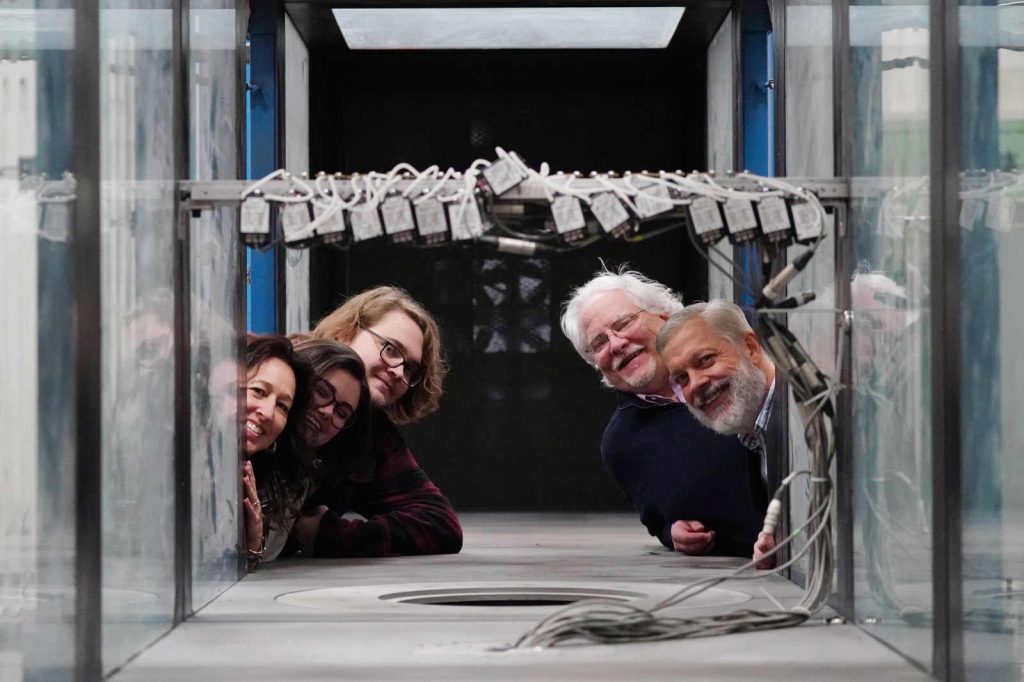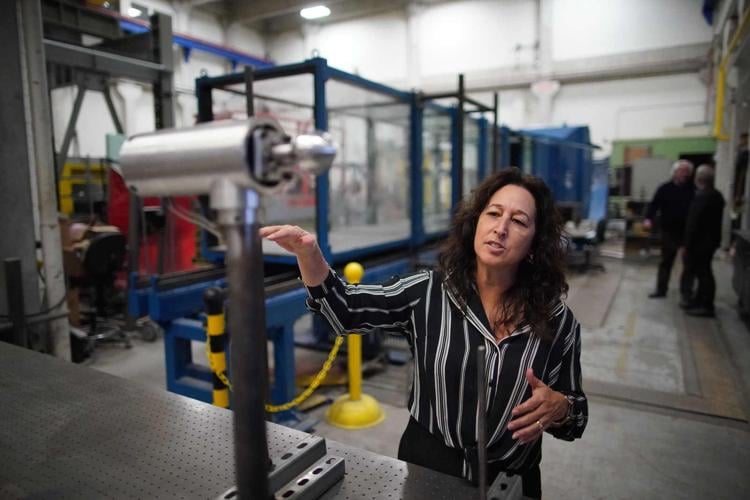
Turning food waste into animal feed using bugs.
Developing windmill blades that adapt to real-time wind conditions.
Making electric vehicle charging more accessible.
These are just a sampling of the things climate tech and clean tech companies growing right here in Western New York are doing.
And these kinds of companies have so far been successful in the region, Launch NY President and CEO Marnie LaVigne said.
Launch NY – a Buffalo-based startup incubator that supports early-stage companies across 27 Upstate New York counties – started its Emerging Cleantech Opportunity Incubator in 2018.
Since then, the number of cleantech companies grew from less than 10% of Launch NY’s overall portfolio to around 20%. Currently, there are 35 companies in the incubator that employ 281 people and have raised $206 million from investors. Companies in the ECO Incubator have created double the jobs of the typical Launch NY company and raised many times more capital investments, LaVigne said.
These companies will be on the forefront of helping New York reach its aggressive climate goals, such as reaching 70% renewable electricity generation by 2030 and a 100% zero-emission electricity sector by 2040.
Dennis Elsenbeck, a sustainability and energy consultant for the law firm Phillips Lytle, thinks Western New York is the perfect region to lead this cleantech revolution.
Energy was born here, Elsenbeck said. It’s part of the community’s DNA, dating back to the late 1800s when power companies in Niagara Falls were among the first to transmit electricity.
Buffalo has room to grow as well, Elsenbeck said. Companies can bring jobs back to communities that need them by setting up shop in blighted neighborhoods.
“You can revive our Rust Belt neighborhoods by thinking about a new green economy,” he said.
And finally, Western New York has the technical and scientific knowledge base needed to innovate these ideas through its robust network of colleges and universities.
“There’s a lot of money really piling into this category now because the challenges are hard and they’re going to take a lot of money to really solve them and bring them to market,” said Danielle Blount, manager of Launch NY’s ECO Incubator.
These local startups are looking to carve a niche in the fast-growing market.

Atrevida Science
Born out of the research conducted by University at Buffalo professor John Hall, Atrevida Science is developing morphing windmill blades that can adapt to changes in wind.
The typical windmill blade is fixed, Atrevida Science CEO Claudia Maldonado said. And the size of windmill blades continues to grow to increase the amount of electricity produced.
But as wind turbines get bigger, they begin to encounter more problems, Hall said.
The largest windmill blades can be as long as a football field. They are expensive to produce and costly to fix if the wind turbine breaks down.
“If the wind changes – there’s a gust, there’s a shear, there’s heavy loading occurring on the blade – there’s little (windmill operators) can do to adjust it,” Maldonado said. “So what they do is pull back production so they don’t damage components, they don’t create damaging stresses. What that relates to is less production, less energy produced. And that’s not good if we want those turbines to be out there producing the maximum amount of clean energy.”
Atrevida Science’s blades are 6% to 14% more efficient than traditional blades, based on simulations and experiments the team has done in UB’s wind tunnel, Hall said.
Atrevida’s morphing blades can reduce the load, or the force, exerted on a wind turbine, by up to 72%, Hall said. Reduced load leads to less wear and tear on the turbines. They won’t break down as frequently, so they can run more consistently and produce more electricity, Hall said. A typical wind turbine produces between 25% to 50% of its nameplate capacity.
Hall’s research has been going on since 2015. Maldonado came on board in 2018 to lead the research to commercialization.
The company is in the process of developing a digital twin, or a virtual model designed to accurately reflect a physical object, of their blades. The digital twin is complex and will mimic real-life conditions as accurately as possible, Hall said.
Once that is complete, Atrevida will be able to take their research to windmill blade manufacturers to show them how their systems can be improved, Maldonado said.
Atrevida will not be manufacturing blades. It’s very expensive, and there’s only a handful of manufacturers that produce windmill blades.
What the company plans to do is sell its blade designs to manufacturers.
“We have to first use modeling simulation tools to figure out the best design and then be able to deliver a design to the industry that makes it more efficient and reduces loading,” Hall said.
Maldonado believes the industry will “pay dearly” for Atrevida’s technology.
Atrevida Science has received almost $500,000 in grants from the National Science Foundation, U.S. Department of Defense and UB, Maldonado said.
During the first several months of 2023, Atrevida Science plans to start looking for investors. The company needs additional funds to hire the programmers and coders to do the digital modeling and simulations.
